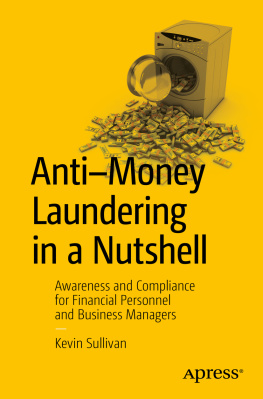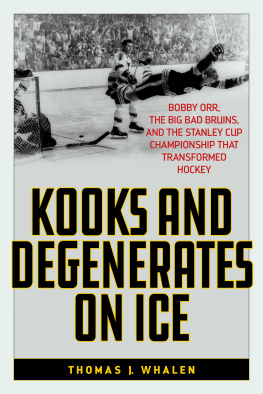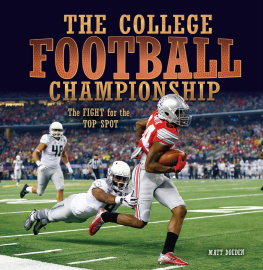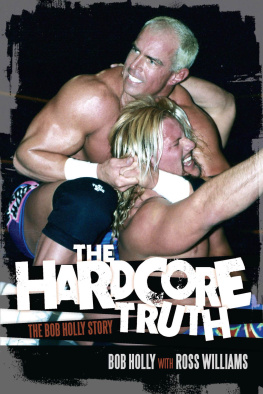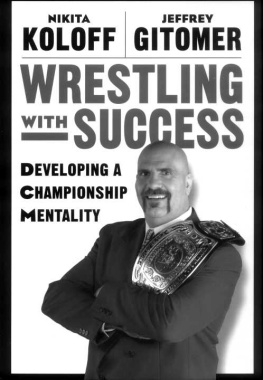THE WWE CHAMPIONSHIP

 | Gallery Books
A Division of Simon & Schuster, Inc.
1230 Avenue of the Americas
New York, NY 10020
www.SimonandSchuster.com |
Copyright 2010 by World Wrestling Entertainment, Inc. All Rights Reserved.World Wrestling Entertainment, the names of all World Wrestling Entertainment televised and live programming, talent names, images, likenesses, slogans and wrestling moves, and all World Wrestling Entertainment logos and trademarks are the exclusive property of World Wrestling Entertainment, Inc. Nothing in this book may be reproduced in any manner without the express written consent of World Wrestling Entertainment, Inc.This book is a publication of Gallery Books, a division of Simon & Schuster, Inc., under exclusive license from World Wrestling Entertainment, Inc.All rights reserved, including the right to reproduce this book or portions thereof in any form whatsoever. For information, address Gallery Books Subsidiary Rights Department, 1230 Avenue of the Americas, New York, NY 10020.All photos World Wrestling Entertainment, Inc., except where noted.Photos on pages 3, 6, 8, 12, 13, 14, 16, 19, 2223, 24, 27, and 29 courtesy of Pro Wrestling Illustrated .First Gallery Books hardcover edition November 2010GALLERY BOOKS and colophon are trademarks of Simon & Schuster, Inc.For information about special discounts for bulk purchases, please contact Simon & Schuster Special Sales at 1-866-506-1949 or business@simonandschuster.com.The Simon & Schuster Speakers Bureau can bring authors to your live event. For more information or to book an event, contact the Simon & Schuster Speakers Bureau at 1-866-248-3049 or visit our website at www.simonspeakers.com.Designed by Ruth Lee-MuiManufactured in the United States of America10 9 8 7 6 5 4 3 2 1ISBN 978-1-4391-9244-3
ISBN 978-1-4391-9320-4 (ebook)
INTRODUCTION
Each year, thousands of young men step into wrestling rings around the world with hopes of one day reaching the top of the sports-entertainment mountain. But only the absolute elite earn entry into the global phenomenon of WWE; and of these select few, only a fraction possess the drive, determination, and innate skill required to capture the industrys richest prize: the WWE Championship.
Over the course of its nearly fifty-year history, WWE and its flagship title have gone through several name changes. In its earliest days, the company was known as the Capitol Wrestling Corporation, a small promotion governed by wrestling powerhouse the National Wrestling Alliance. Capitol Wrestling broke away from the NWA in 1963 to form its own stand-alone company called World Wide Wrestling Federation. In 1979 the name was shortened to World Wrestling Federation. And finally in 2002, the company adopted its current name, World Wrestling Entertainment. For the sake of consistency, this book will mainly reference both the company and the championship under their current labels (WWE and WWE Championship), regardless of the time period.
In the pages that follow, the story of the WWE Championship will be told like never before. Along the way, youll relive the events that helped elevate the title to its lofty status, as well as learn the true stories that unfolded behind the scenes. The Iron Sheiks refusal to be bought off by the rival AWA. Sgt. Slaughters threats on his life. Ric Flairs internal struggles before finally jumping to WWE. Steve Austins meteoric rise to super-stardom. John Cenas battle for respect. Every champions true story gets told here.
The WWE Championship has no equal. It represents the absolute pinnacle of the wrestling world. And for its holders, it means instant access into the most elite fraternity in all of sports-entertainment.
Less than fifty men have successfully etched their names into the record books. And this is their story. Its time to grab your front-row seat and be guided through the long and storied history of the WWE Championship.
NORTHEAST SUPREMACY
There are only a handful of matches that sports-entertainment historians regularly point to as the most pivotal performances in WWE Championship history: Bruno Sammartinos quick defeat of Buddy Rogers in May 1963; Hulk Hogans drubbing of the Iron Sheik in January 1984; Shawn Michaelss highly controversial victory over Bret Hart in the now-infamous November 1997 Montreal Screwjob. But amazingly, the most influential title match in WWE history may have actually taken place before the company ever existed.
On June 30, 1961, nearly two years before WWE sold its first ticket, Buddy Rogers challenged Pat OConnor for the National Wrestling Alliance World Heavyweight Championship at Chicagos Comiskey Park. In front of more than 38,000 fans, the cocky Rogers claimed the prestigious title that fateful night, thus ending OConnors remarkable two-and-a-half-year reign. While winning the gold was certainly impressive, on the surface the victory simply appeared to be your run-of-the-mill title change. But in reality, Rogerss NWA Championship win actually helped set the wheels in motion for the creation of the global phenomenon known today as WWE.
To fully comprehend how Buddy Rogerss victory eventually resulted in the formation of WWE, it is important to understand how the Northeast wrestling territory was operated during this time and, most important, Vincent J. McMahons rise to power within the region and his subsequent use of Rogers.
Vincent J., the father of current WWE chairman Vincent K. McMahon, grew up in and around the businesses of boxing and wrestling. As the son of popular promoter Jess McMahon, he was afforded a firsthand education that other promoters could only dream of obtaining. This behind-the-scenes access into the wrestling worlds inner workings helped catapult Vincent J. into a very prominent position at a relatively young age. At just twenty years old, he began promoting his own fights out of Hempstead, New York, in 1935. But before he could make a serious name for himself within the Northeast territory, the up-and-coming promoter was shipped to North Carolina to serve in the United States Coast Guard during World War II. The move set McMahons professional career back several years, but he refused to let it permanently derail his dreams.
When the time came for McMahon to get back into the business, the New York territory was already under the control of successful promoter Joseph Toots Mondt. This forced McMahon to take his passion for the squared circle elsewhere. He eventually landed in Washington, D.C., where he began managing Turners Arena, a dilapidated old building once owned by former middleweight wrestling champion William Joe Turner. Over the next four years, McMahon promoted concerts and weekly wrestling events out of Turners Arena before eventually buying the facility outright in December 1952.

Pat OConnor (left).
Now with an established arena as part of his portfolio, McMahon went right to work creating his own wrestling company; and on January 7, 1953, he put on his first show under the Capitol Wrestling Corporation banner. Like most startups, Capitol Wrestling experienced its fair share of uncertainty in the beginning. But the companys fortunes eventually solidified when McMahon embraced the power of television, a new media that many promoters didnt necessarily understand at the time.
On January 5, 1956, McMahon aired the first-ever Capitol Wrestling television program. The show was an instant hit, and within six months Capitol Wrestling was in high demand as far north as the coveted New York market. This was the opening McMahon needed: With Joe MondtNew Yorks chief promotertemporarily sidelined, he was able to promote his product at famed Madison Square Garden.
Next page


